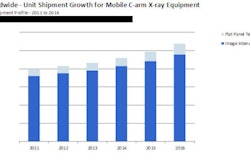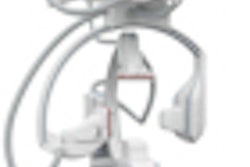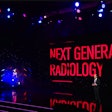
Eight years is a long lifespan for a PACS. While an old system may continue to function, its effectiveness is outpaced by advancing imaging technology that places increasing performance burdens and requires greater workflow efficiency, as Dutch radiologists and managers have learned.
Refaja Hospital is a 200-bed regional facility in the municipality of Standskanall, south-east of Groningen. It went digital with a radiology information system (RIS) and a PACS in 2004. It needed a more powerful and sophisticated PACS with the ability to manage large image datasets, provide more efficient and more intuitive workflow, offer more automated and personalized task management, and seamlessly integrate third-party software such as 3D functionality.
The hospital has contracted with its existing vendor, Agfa HealthCare, to upgrade its RIS and PACS. Unlike the major software upgrade of the IMPAX RIS (from Version 5.5.1 to 5.8), the replacement version of the IMPAX PACS (6.5) necessitates replacement of all hardware, including archives and the workstations and display monitors of the existing IMPAX 5.2 system.
Work on the installation started this month and is scheduled, along with testing, over a 90 day period. The "go-live" activation target is March 2013. AuntMinnieEurope.com talked with John Visscher, the manager of the radiology department, about the project. He's allocating between one-third and one-half of his time to the project, assisted by a four-person project team and key users. The group's objective, along with the vendor installation team, is to optimize the features of the new system to meet the specific needs of a department performing about 60,000 exams annually and its four radiologists who interpret them.
Planning and implementing the transition
Minimizing the disruption of the upgrade is imperative. Planning is a partnership event, ideally performed in harmony by the vendor and the hospital's PACS implementation team. It's important that the responsibilities of each group are understood and accepted. It's important for the radiology department -- its physicians, clinical and administrative support staff, and IT professionals to know in advance what changes to expect. By learning this in advance, the radiology department can use this information to redesign their workflows by leveraging changes in technology and to optimize their operations.
Bob Craske, Agfa's senior marketing manager of radiology PACS, explained that during the planning phase needed to produce a proposal and quote for the customer, a site assessment is undertaken. This process is nothing new with respect to PACS implementation, but its elements are worth mentioning. In addition to assessing new hardware that may be needed for the workstations, the servers, and the archive(s), the vendor obtains details about the current local workflow, the desired workflow, the users and future users, and identifies needs to for improved efficiency.
The early planning stage also involves the RIS and PACS administrators, the additional IT team for radiology if applicable, and the radiology administrator. Data are shared, and the plan is optimized. Presumed or known disruptions are identified, and a plan is developed for workarounds that will keep the disruption to a minimum.
The system is pre-staged as much as possible. This includes pre-staging of equipment, pre-testing of database migrations, and preconfiguration and testing of the system's workflows. Visscher explained that the two systems will overlap for a period of time. For example, the new diagnostic workstations are being installed weeks in advance so that radiologists will be able to receive advance training and have the ability to learn new functionalities before the implementation date. This time will also enable them to identify what features they wish to be more customized or be modified to make them easier to use.
Ample time is scheduled to rigorously test the new system, to identify the inevitable issues that even the most thorough pre-staging may not identify, and to correct them. For both Visscher and his Agfa RIS/PACS account manager, Albert Vroklage, working out problems prior to go-live and having the activation be smooth for its users in the radiology department and the hospital is of paramount importance.
Key features of a contemporary PACS
The architecture and features of the new IMPAX RIS/PACS are not unique to Agfa. They are representative of how today's PACS differs with respect to features and functionality from even just a few years ago.
The new PACS is designed to leverage Web technologies to deliver workflows and advanced image processing to the desktop. IMPAX 6.5 is engineered to take advantage of emerging computer technology and current operating systems that can provide better performance, stability, and resiliency to hardware failures.
"The new software will bring a lot of new functionality. The integrated RIS/PACS is very workflow driven. The new system will have guided workflows with personalized work-list management and more robust priority rules," Visscher said.
The radiologists read very big datasets that can have thousands of images in one exam, and the new software has tools for enhanced study navigations and volume viewing to manage large data volumes, he added. "We hope that these tools will help the radiologists to navigate very efficiently through these images. There are many tools that should make workstation-related processes easier, faster, more intuitive, and logical."
The radiologists are particularly pleased about 3D applications to display in a more efficient way the results of the exams. The system the Refaja radiologists will be using will have extended desktop menus that integrate advanced image processing in a multimodality environment. Other third-party tools include multiplanar spine labeling, orthopedic templating, a fully integrated nuclear medical processing platform, peer review, and teaching file management.
The IHE mammography image profile is also supported. This will facilitate more efficient mammography workflow and also eliminate the need for a standalone mammography workstation.
For the RIS/PACS administrator, tools exist to better analyze data and monitor PACS operations. For the clinician, instant messaging and easy to use interfaces and clinical viewers make access to radiologists and their patients' reports easier.
Not apparent to the average user is beefed up security with authentication models and more powerful security and auditing capabilities. These are designed to protect patient information, to offer better audit tracking, and to reduce the amount of time it takes to identify any privacy breaches.
So also is architecture design. Agfa and other vendors offering integrated RIS/PACS use a centrally deployed and managed architecture that speeds and simplifies operational efficiency.
"It's almost like building a new system. I did this eight years ago, and it is almost the same. But with improvements in RIS and PACS technology, the end result will be better," Visscher said.
The RIS/PACS contract with Agfa is only for 24 months. Refaja Hospital is one of three hospitals that comprises the East Groningen Hospital Collaboration Foundation (Stichting Samenwerking Ziekenhulzen Dost Groningen), which may decide to implement a single RIS and PACS in a multifacility network.
Right now, none of the hospitals are using the same systems. So Visscher is also thinking about the future. "We'll see what happens," he said.



















